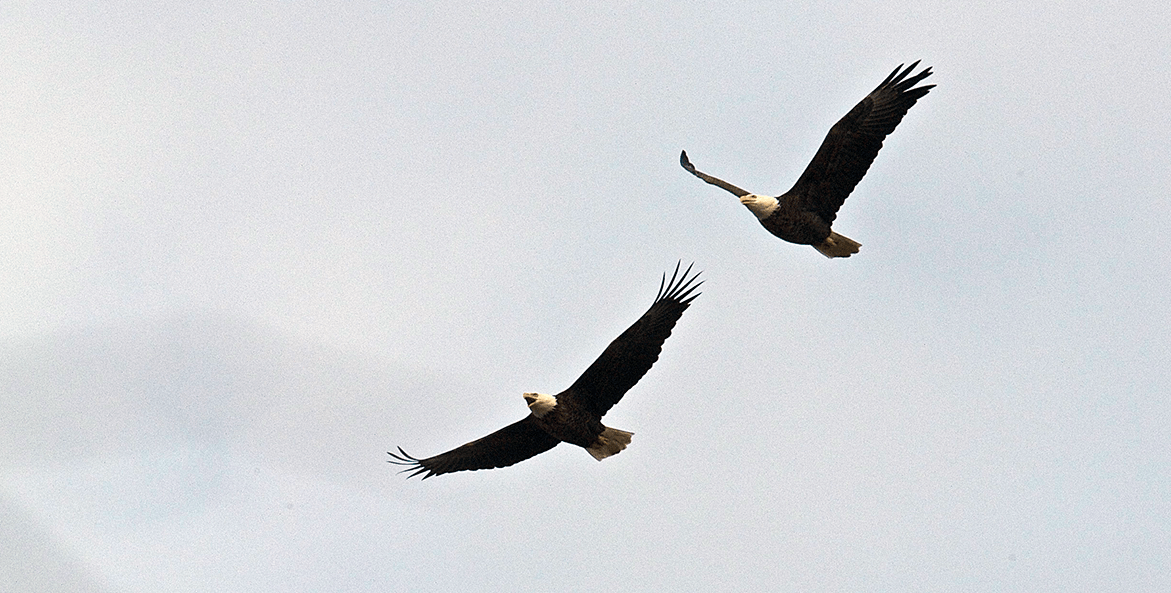From pop culture references (Jack and Diane) to Bay-themed monikers (Jimmie and Sookie) to beautiful Algonquin terms for ‘eagle’ and ‘two,’ we were blown away by the creativity and thought behind each and every name submitted. We even appreciated Eagle McEagleFace. But, there can only be one winner. With it being Black History Month and given the location of the nest, one pair of names stood out the most.
The winner is… Harriet and Frederick, after Maryland natives and abolitionist leaders, Harriet Tubman and Frederick Douglass.
What’s the nest got to do with them?
Frederick Douglass spent his life fighting for justice and equality. Born into slavery on Maryland’s Eastern Shore in 1818, he escaped as a young man and became a leading voice in the abolitionist movement.
Harriet and Frederick’s nest sits just across Blackwalnut Creek from our Philip Merrill Environmental Center in a community known as Highland Beach. In 1893, Frederick Douglass’ son Charles and his wife Laura bought 40 acres of bayfront land from a freed black farmer after being turned away from neighboring white-only bayfront resorts. Charles planned to develop a small summer colony for blacks looking to escape the summer heat in Baltimore and Washington, D.C., and the oppression of segregation. With input and support from his father, Charles built the first house, Twin Oaks, for the senior Douglass, who helped design and supervise the construction. Although Frederick Douglass died in 1895, the same year the home was finished, he did stay there a couple nights.
Over the years, friends and acquaintances purchased lots, built additional homes, and the community began to attract other black visitors. In 1995, the State of Maryland and Anne Arundel County acquired Twin Oaks and deeded it to the Town of Highland Beach as a memorial to Frederick Douglass.
From our observations across Blackwalnut Creek, Harriet and Frederick’s nest sits high in a tree just two houses down from Twin Oaks, which is now home to the Frederick Douglass Museum and Cultural Center.
Harriet Tubman and the Bay
Like Douglass, Harriet Tubman was born into slavery on Maryland’s Eastern Shore between 1820 and 1822. In her late 20s, Tubman escaped slavery through the marshes of the Chesapeake Bay on her way to freedom in Philadelphia. After gaining her freedom, Tubman helped others gain theirs as a “conductor” of the Underground Railroad. She returned to the South several times and helped dozens of people escape. Tubman was never caught and never lost a “passenger.”
From their perch high above Twin Oaks, Harriet and Frederick will be able to see Maryland’s Eastern Shore, the birthplace of their two namesakes, who helped change American history and to whom we all owe our sincerest gratitude.




